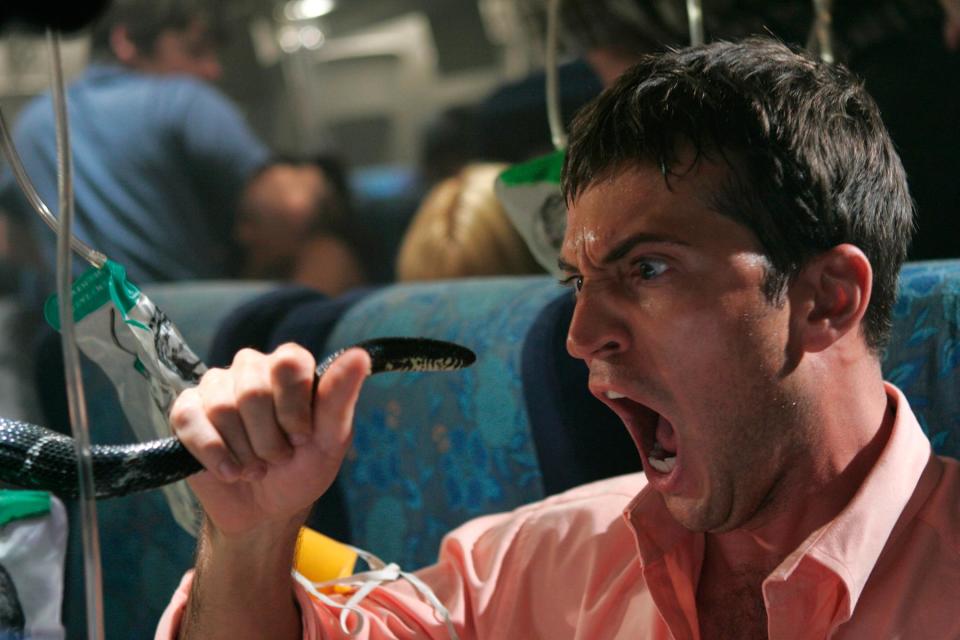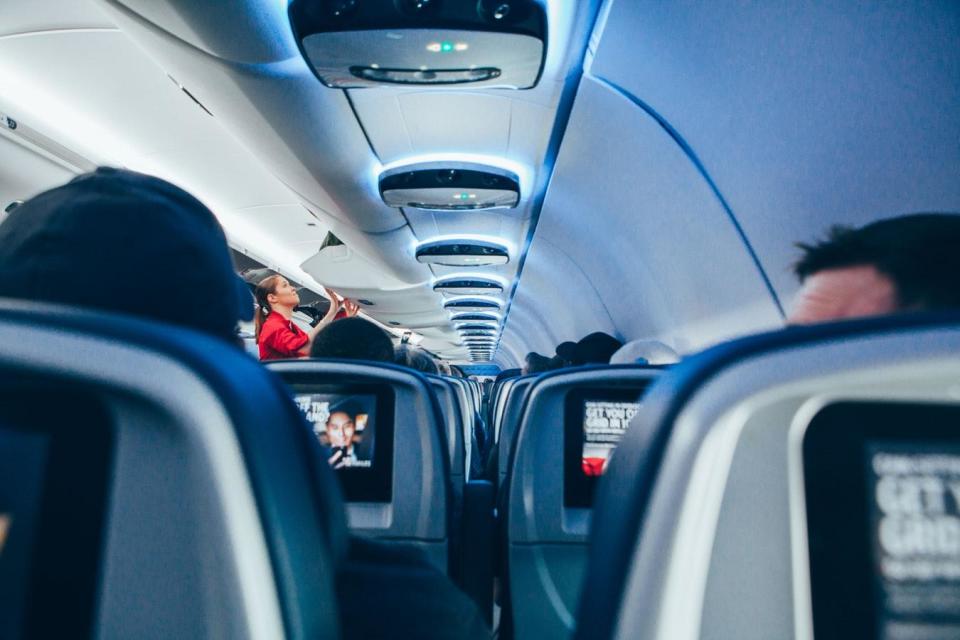High fliers reveal their worst 'flightmares'

It’s an inconvenient truth but everyone has a “flightmare” — a nerve-jangling personal story about a plane journey gone wrong. There’s an old Flanders & Swann joke that goes: “If God had intended us to fly he would never have given us the railways.” Given the option, people invariably tend to prefer their feet firmly planted on the ground.
This week the conversation around the scuttlebutt has again turned to flying, after an explosion on a Southwest Airlines flight from New York to Dallas shattered a window, partly sucking passenger Jennifer Riordan out of the plane. The bank executive, aged 43, died from blunt-force trauma to her head, neck and torso.
Passengers later shared videos of the disaster on the internet, taking a grim fascination in the tragedy.
According to the Aviation Safety Network, given the expected worldwide air traffic of 33 million flights per year, the accident rate is one fatal passenger flight accident per 4,125,000 flights. Statistically speaking, flying is much safer than other forms of transport. Trains have many more accidents than aircraft each year, and you are far more likely to die in a car crash than in an aeroplane. And yet our obsession with the phenomenon continues. Perhaps it is because although air accidents are rare, the vivid video footage of the scenes give them a sense of a terrifying immediacy.

Those who are afraid of flying have a complicated relationship with air crashes. On the one hand there’s the Kurtzian horror; on the other, a kind of moribund fascination. Jemima Goldsmith, who survived a near plane crash in 2000 with her cousin Ben Goldsmith, has subsequently written about finding air disasters “thrilling”.
“My first instinct,” she wrote in the Daily Telegraph, “when I see images of plane wrecks is to waggle them in the faces of every hitherto happy flier and shriek dementedly: “I told you — flying is deadly.” My second, more shameful, instinct is a desire to trump everyone else’s disaster: mine was better.”
Goldsmith calls it “plane porn” — but she’s not being fair to herself, or to anyone. We read about tragedies such as the Southwest Airlines flight, we add survivor stories of our own. This morning, a London-bound transatlantic jet was forced to make an emergency landing after its engine burst into flames in mid-air 30 minutes after take-off. Sure, it looks like a palimpsest, but it’s also a proof of endurance — I made it through something, I survived, and you can too.
Take, for instance, Andrew Wilson, the biographer and author of A Talent for Murder, who was on a Miami-bound flight taking off from the Bahamas, staring out of the window when “a bird — a big one — hit the engine”. “We knew we were about to fly over shark-infested waters. People started to scream. I saw a stream of urine trickle down the aisle. Some passengers started to pray. ‘Are we going to die?’ I heard someone say. We could see flames. For a few minutes, the plane seemed to be out of control, but then — somehow — the pilot managed to bring it back down onto the airfield.”
The point is, he says, that they survived, and lived to tell the tale at dinner parties. “We had a connecting flight back to London. And so we boarded. Twenty minutes into the flight we hit a storm. Turbulence rocked us and sent us plummeting once more. And this time the screaming was even louder.”
You have to have a certain level of braggadocio to keep calm, admittedly. Jeremy Clarkson has been in three plane crashes, including one in Libya and one in Cuba, during which he lit a cigarette as the plane went down.
If it’s not the wing, it’s the weather. Never is our British preoccupation with the climate more pronounced than when staring out of an aeroplane window. John Owen, a personal tutor, noticed the clouds darkening over the runway as he waited for his flight from Luton to Berlin to take off last October.
“At the end of the runway the pilot said, ‘ladies and gentlemen, I have just been informed by air traffic control that there is a storm passing over Luton at the moment so in the interests of safety, we will just wait here on the ground until it has passed.’ Seconds later, the engines fired up and we set off anyway”
Assuming the storm had blown over, Owen put a podcast on and dozed off. “I was awakened a few minutes later by a bright flash and a loud bang. People started screaming and I became gripped by panic, which was made worse when I looked out of the window and saw that we were definitely losing height.
For what was probably no longer than half a minute, I genuinely thought that was it for me, before I felt the thrusts come back on and we started gaining height again through the clouds. The pilot came back on and in that immensely reassuring pilot voice said: ‘Just a quick apology, ladies and gentlemen. I was informed by air traffic control that we were safe to take off. As I suspect many of you will have noticed however, we were struck by lightning as we entered the clouds. Having dropped us down to get clear and checked all the instruments, I can confirm that we are all OK.”
Pilots aren’t always so reassuring. Last year easyJet was forced to deny claims that, ahead of a flight from Malaga to Bristol, one of its pilots told passengers there was a “50/50” chance both its engines would work, before asking them for a “show of hands” to decide whether they should take off or stay put. The airline confirmed the “technical issue” but strongly denied that the pilot asked fliers for a vote.
Some information is better than no information. “Two hours into a five-and- a-half-hour flight, somewhere over the Atlantic they announced there was a fault with the plane and we needed to turn around,” recalls Ellie Clarke, a yoga instructor. “We weren’t given any more information and had to endure two hours flying back to New York. It was tense but at least I had time to make peace with the fact I may be about to die!”
A crash isn’t the only disaster that can befall fliers. On a flight to Austria, a woman noticed that everyone around her was in a deep sleep. She felt drowsy too. It turned out that the tube to balance the air pressure hadn’t been opened, causing everyone to feel tired because of a lack of oxygen.
A friend was on a flight from Boston to London on the day of 7/7 – the last flight that departed before they grounded all international flights (this is standard practice). The people on that flight had no idea there had been a terrorist attack, until they arrived at Heathrow to find the world’s press waiting to tell them what had happened.
A little learning is never a dangerous thing when it comes to air travel. In Putney, company Flight Experience runs psychologist-led sessions for people trying to overcome a fear of flying, in a flight simulator. A colleague has a friend so scared of flying that she watched 100 hours of flight training films and took a simulator course — and is now is convinced she could land a plane in a crisis. “She probably couldn’t but that’s irrelevant, because she thinks she can, so she’s not scared of flying any more,” says the colleague. “She asks to go in the cockpit as much as possible so she can scope out the equipment.”
The point being, air-scare stories will give you flightmares — but it’s safer up there than even the most angst-ridden flier might imagine.

 Yahoo News
Yahoo News 